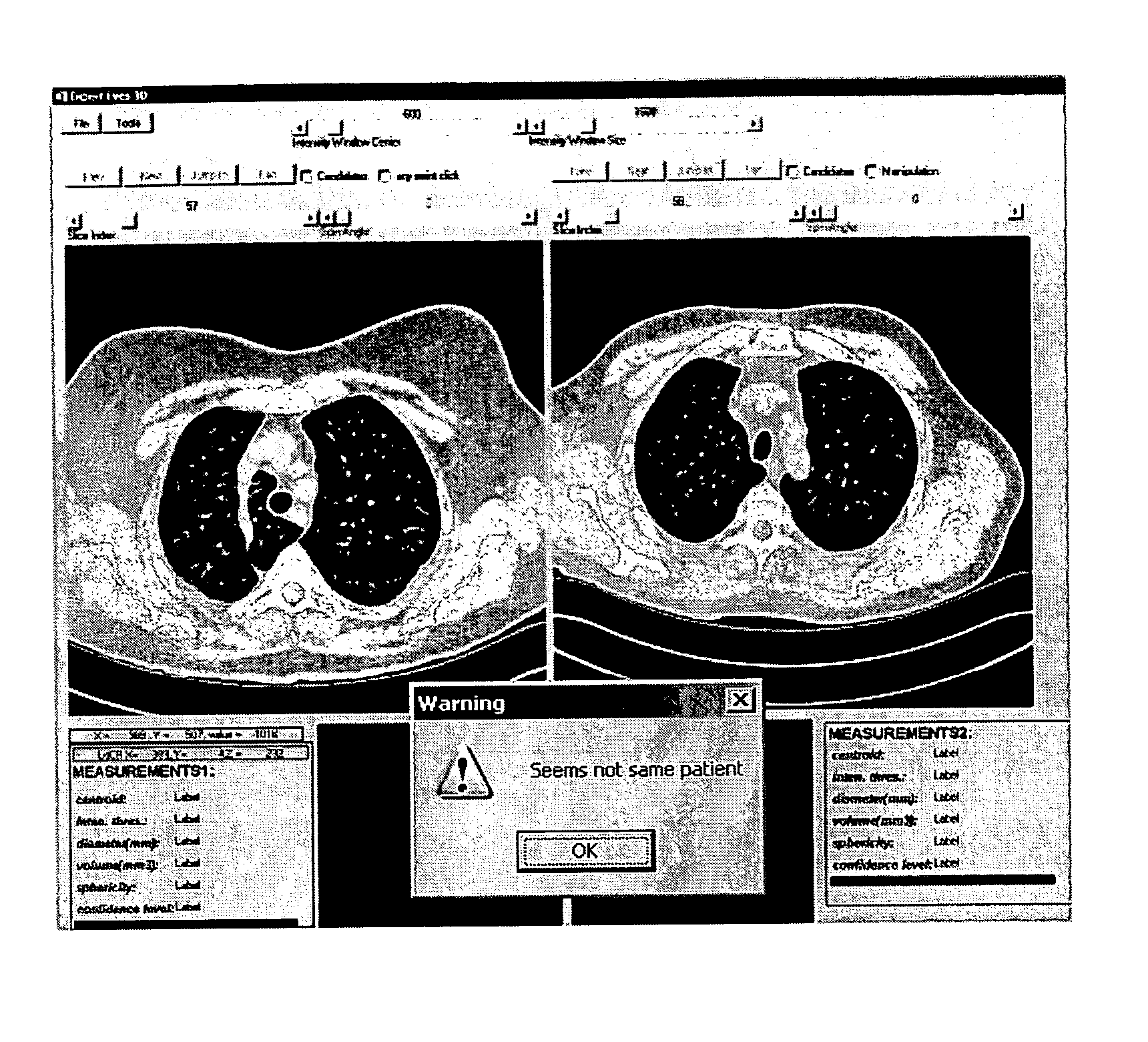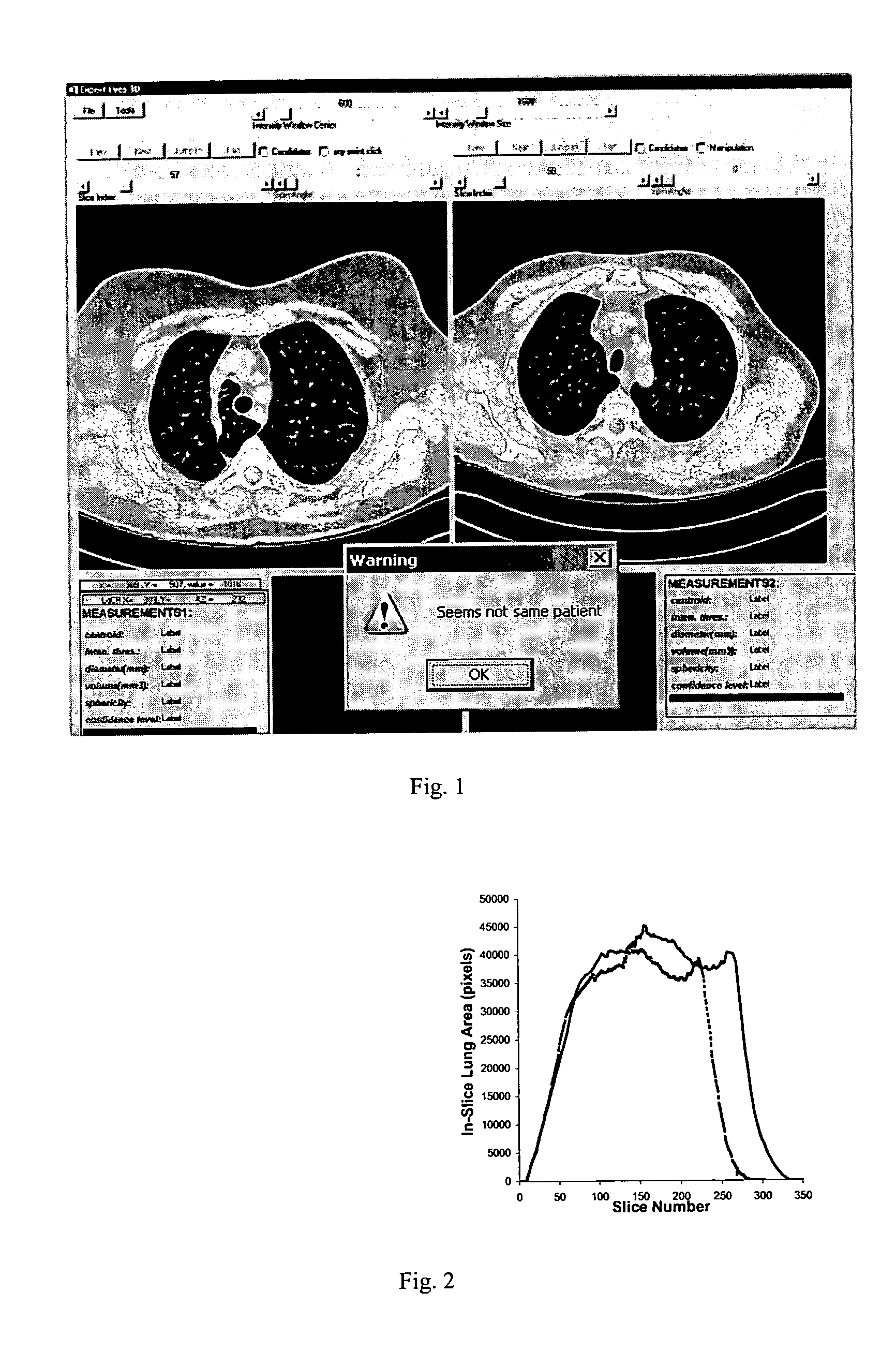Method and system for patient identification in 3D digital medical images
a technology of 3d digital medical images and patient identification, applied in image enhancement, instruments, applications, etc., can solve the problems of no scheme for automatic patient identification, two tags that are not very reliable, and the patient name does not match, so as to achieve high reliability and robustness
- Summary
- Abstract
- Description
- Claims
- Application Information
AI Technical Summary
Benefits of technology
Problems solved by technology
Method used
Image
Examples
Embodiment Construction
[0022] Three-dimensional digital medical images are usually generated by computerized medical equipment such as CT scanners and MRI machines. Selected anatomic information and structures can be extracted as features from this type of volume data. These features, if unique enough, can be used to identify the patient. The anatomic information and structures to be extracted to be features for identification should be reliable and stable. For instance, they should be relatively immune to segmentation errors, body pose, and inhalation levels. This will enable the correct identification under most conditions.
[0023] The methods and systems disclosed herein can be used to identify individuals using biological traits. The software application and algorithm disclosed herein can employ 2-D and 3-D renderings and images of an organ or organ system. As an example, two loaded datasets in a chest CT follow-up study are compared to determine if in fact they belong to the same patient, as shown in ...
PUM
 Login to View More
Login to View More Abstract
Description
Claims
Application Information
 Login to View More
Login to View More - R&D
- Intellectual Property
- Life Sciences
- Materials
- Tech Scout
- Unparalleled Data Quality
- Higher Quality Content
- 60% Fewer Hallucinations
Browse by: Latest US Patents, China's latest patents, Technical Efficacy Thesaurus, Application Domain, Technology Topic, Popular Technical Reports.
© 2025 PatSnap. All rights reserved.Legal|Privacy policy|Modern Slavery Act Transparency Statement|Sitemap|About US| Contact US: help@patsnap.com



